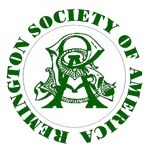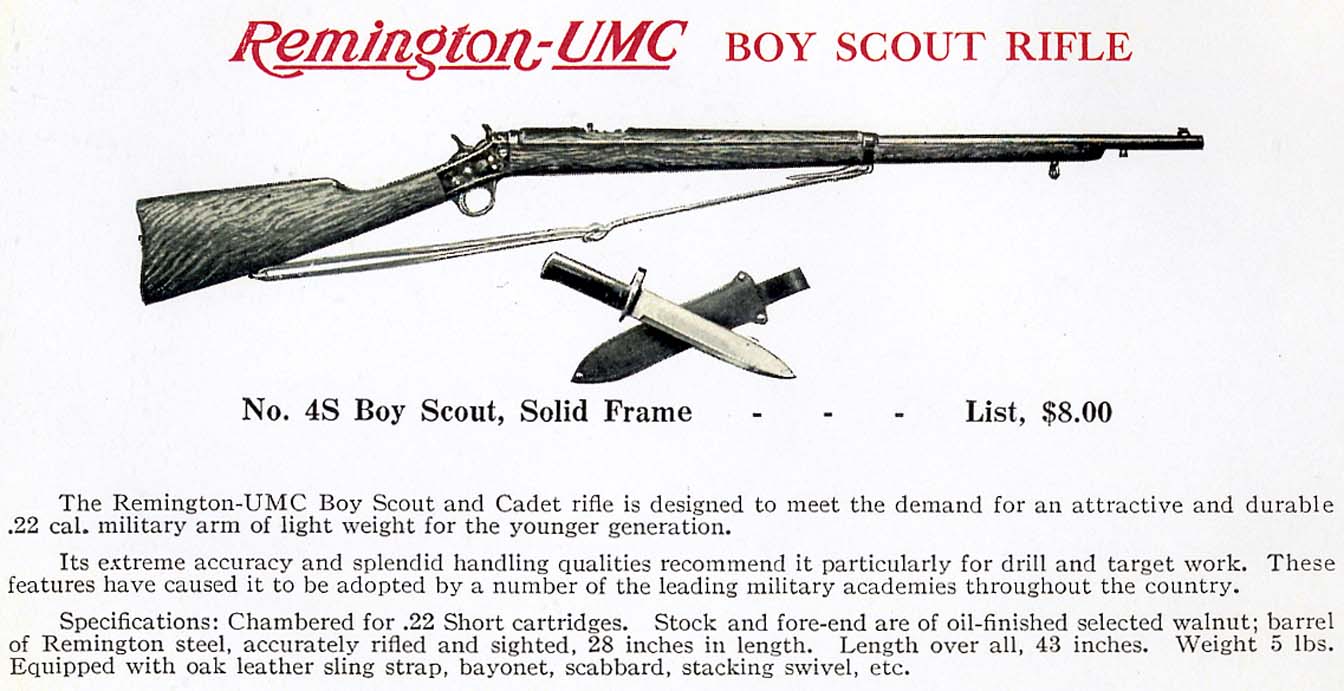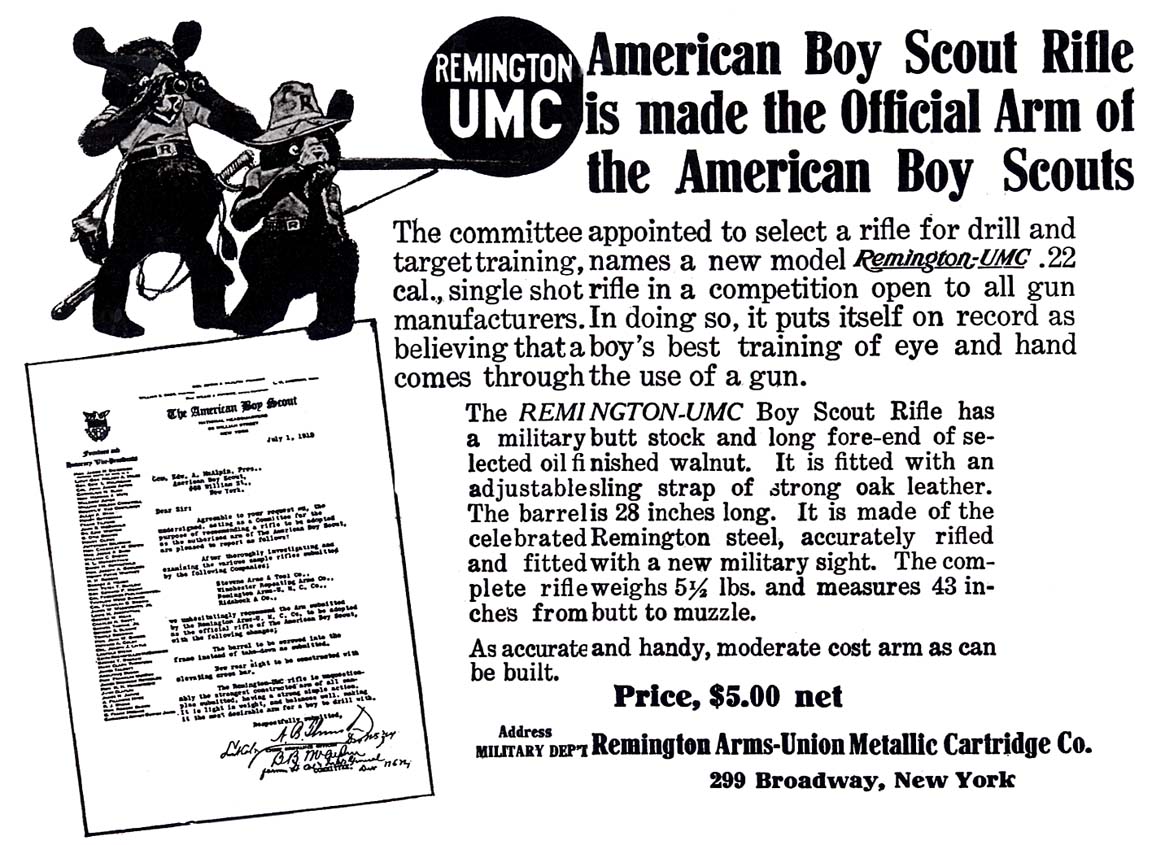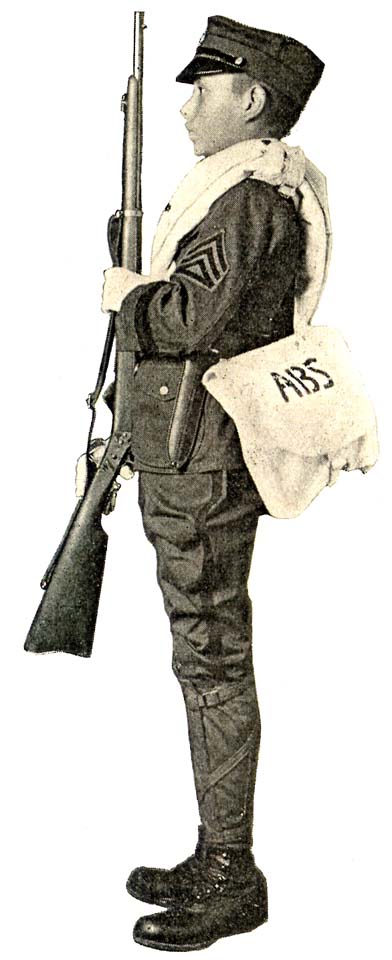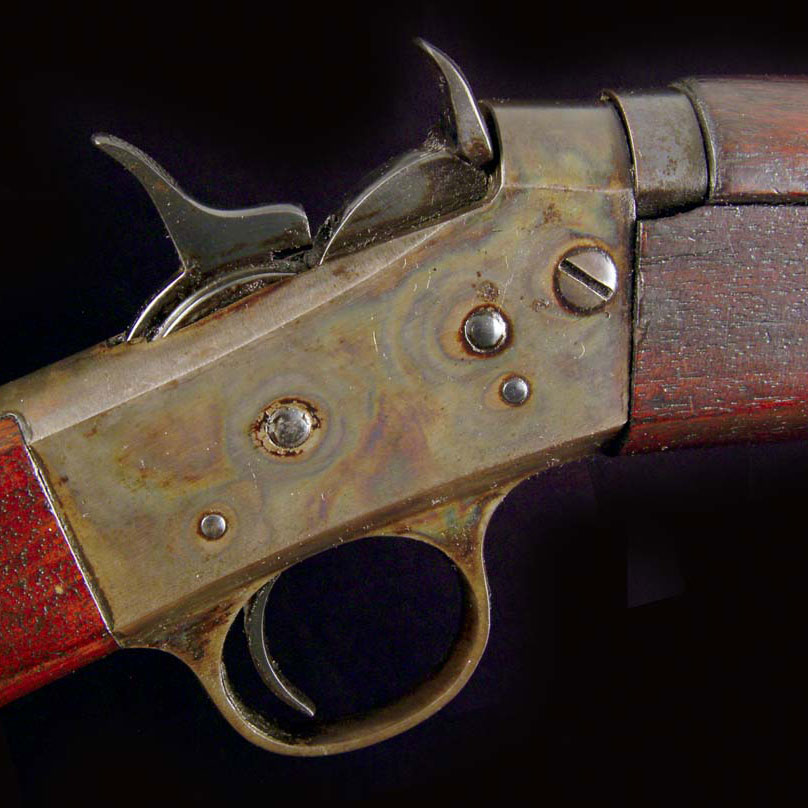 |
|
No. 4-S “Boy Scout” Rifles
No. 4-S “Boy Scout” Rifles
(1913-1914)
Serial numbers known to 1482
Total quantity made is unknown, but may be as many as 1,500 rifles
“We unhesitatingly recommend the arm submitted by the Remington Arms-UMC Co. To be adopted as the official rifle of the American Boy Scouts with the following changes: the barrel to be screwed into the frame instead of take-down (as submitted); and a new rear sight to be constructed with elevating cross bar.”
The catalog also stated:
“The new Remington-UMC Boy Scout and Cadet Rifle is designed to meet the demand for an attractive and durable .22 cal. military arm of light weight for the younger generation. Its extreme accuracy and splendid handling qualities recommend it particularly for drill and target work. These features have caused it to be adopted by a number of the leading military academies throughout the country.”
A copy of a letter from the American Boy Scout organization dated July 1, 1912 verifies that the rifle submitted for testing from Remington-UMC was recommended as the authorized arm of the American Boy Scout. It was called unquestionably the strongest constructed arm submitted. Other guns, made by Stevens Arms and Tool Co., Winchester Repeating Arms Co. and Ridabock & Co. were also tested, but Remington received the order.
Characteristics of the No.4-S Boy Scout rifle include:
- 28 inch round barrel fitted with a removable bayonet lug.
- One-piece bayonet with leather scabbard that was originally furnished with the rifle.
- Oil finished, American Walnut stock (identical to that on No.4 sporting rifles) and a 23¼ inch military-style, tapered wood forearm, a 13½ inch handguard, two barrel bands, and a stacking swivel.
- Unique, small, military-type rear sight with ladder adjustment rear sight was that was not used on any other Remington firearm.
- Simple square metal blade front sight, dovetailed into the barrel.
- Case hardened receiver with the remainder of the metal parts (barrel, breech block, hammer, butt plate, barrel bands, etc.) blued.
- Advertised throughout its production as a solid frame, but it was not. The take-down frames from the lever system were used. A take-down screw (flush with the receiver (not a thumb screw) was on the right side of the receiver with left hand threads. The left hand threads were the cause of many angry words and mangled screw heads.
During its short production, the No.4-S Boy Scout rifle had at least three different barrel stamps:
- The earliest rifles retained the barrel stamping and location found on the predecessor No.4 Cadet rifle. All barrel markings were hidden by the forearm.
- The next type of barrel stamp was moved forward so they could be seen without removing the handguard.
- The third type, which includes the majority of production examples known added MODEL 4-S ahead of the other stamps.
The Remington “Boy Scout Model” was replaced by the Remington Military Model rifle in 1914.
|
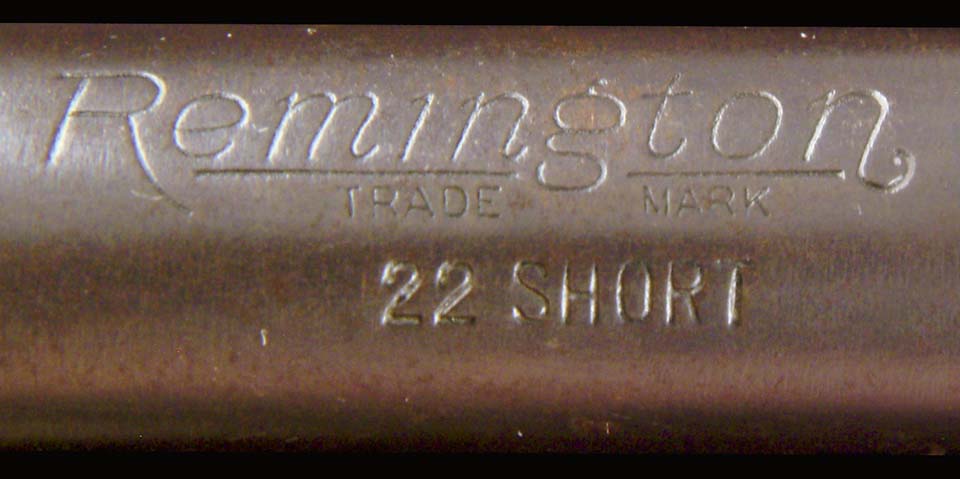 |
Click on any image: For a Full Size Original Image View or for Download
Click the ![]()
For In Browser View (with previous/next images):
